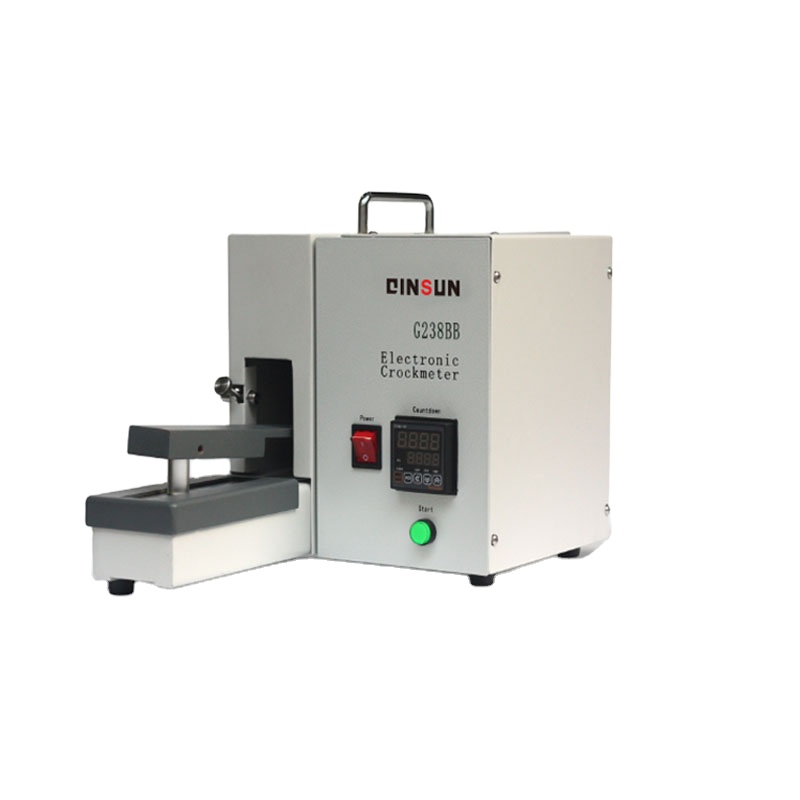Color fastness is a term used in the textile industry to describe a material's color resistance to fading or running due to washing, exposure to sunlight, and contact with sweat, saliva, or other conditions or substances. One of these conditions is rubbing, also known as crocking. The American Association of Textile Chemists and Colorists (AATCC) sets standards for testing colorfastness, including the AATCC Test Method 8 for colorfastness to crocking (rubbing).
1. Understanding Crocking and the Need for Crocking Tests
Crocking is the process where the dye from a fabric rubs off onto another surface through friction. This can cause concern in situations where dyed textiles are in contact with light-colored textiles or objects, as the color transfer can be readily apparent and undesirable. For example, if you've ever sat on a red chair and found that some of its color has transferred onto your white shirt, you've experienced crocking firsthand. In response to this industry need, various tests, including AATCC Test Method 8, have been established to determine the degree of color transfer from the surface of colored textile materials to other surfaces by rubbing.
2. AATCC Test Method 8 - Colorfastness to Crocking
AATCC Test Method 8 describes a lab procedure to determine a textile's colorfastness to crocking. The procedure uses a white piece of test cloth —a Crockmeter Square (AATCC Test Cloth 1) — and a testing device known as a Crockmeter.
3. Understanding the Crockmeter
A Crockmeter is a device used to test the amount of color transfer from a textile sample to see how colorfast the sample is to dry or wet rubbing. The instrument rubs the white test cloth against the test specimen under controlled conditions of force and rubbing motion––104 strokes at the rate of one stroke per second.
4. Dry and Wet Testing
The AATCC Test Method 8 includes both dry and wet testing. Dry testing involves rubbing the textile sample with a dry piece of white test cloth, while wet testing uses a piece of test cloth that has been dampened with water. Wet testing is generally considered to be more severe than dry testing. The reason for this is that the moisture may cause the dye to become more soluable, which can lead to more color transfer onto the white cloth.
5. Evaluating the Results
After the rubbing process, the amount of color transferred to the white test cloth is evaluated. This is generally achieved using a color scale (the Gray Scale for Staining) that ranges from Grade 5 (no staining) to Grade 1 (severe staining). The grades in between represent varying levels of staining.
6. Importance of Crocking Tests
Colorfastness to crocking is an important quality characteristic for dyed or printed textiles. It's particularly important for textiles that will come into contact with surfaces where color transfer would be visible and potentially unsightly or damaging. Crocking tests, such as those performed using the AATCC's method, help manufacturers assess the quality of their dyes and printing processes as they strive to improve their products.

7. Factors Influencing Colorfastness to Crocking
The fastness of color to crocking can be influenced by several factors. These include the type of fibers and textiles used, the quality and type of dye, the dyeing or printing process, and any finishing treatments applied to the textile. For example, synthetic fibers often have better colorfastness properties than natural fibers, and darker colors are typically more likely to crock than lighter ones.
8. Overcoming Crocking Issues
Several strategies can enhance the colorfastness to crocking of textiles. These include using high-quality, well-proven dyes and dyeing processes; using textile materials that are known for their good colorfastness properties; and applying appropriate finishing treatments that can help to seal in the color.
In conclusion, the AATCC Test Method 8 for colorfastness to crocking plays a crucial role in the textile industry, helping manufacturers produce high-quality, colorfast textiles. As a consumer, understanding the implications of this test can also be beneficial, especially when buying new clothes or home furnishings.




